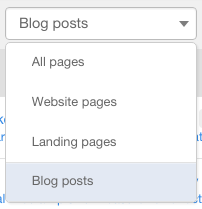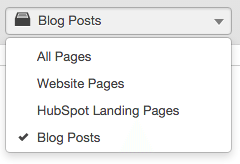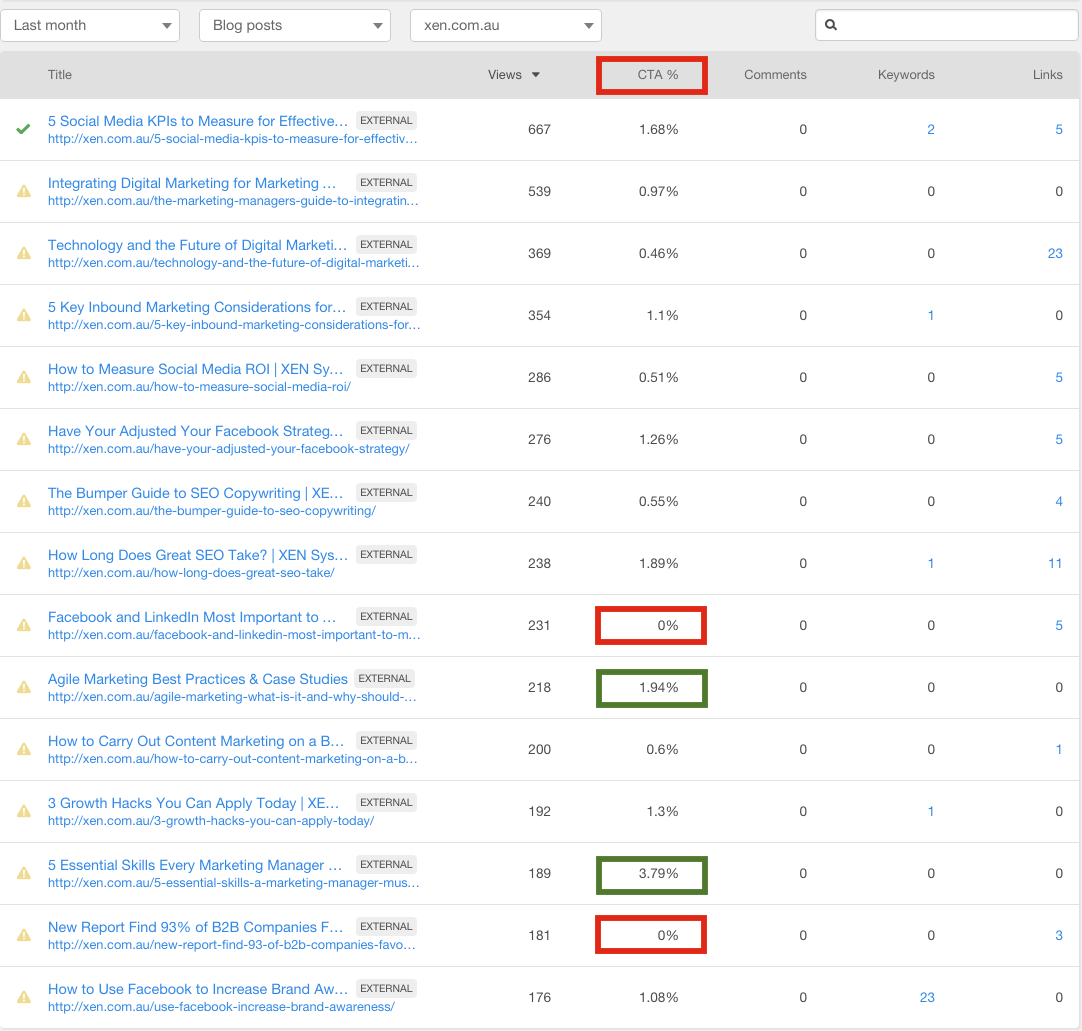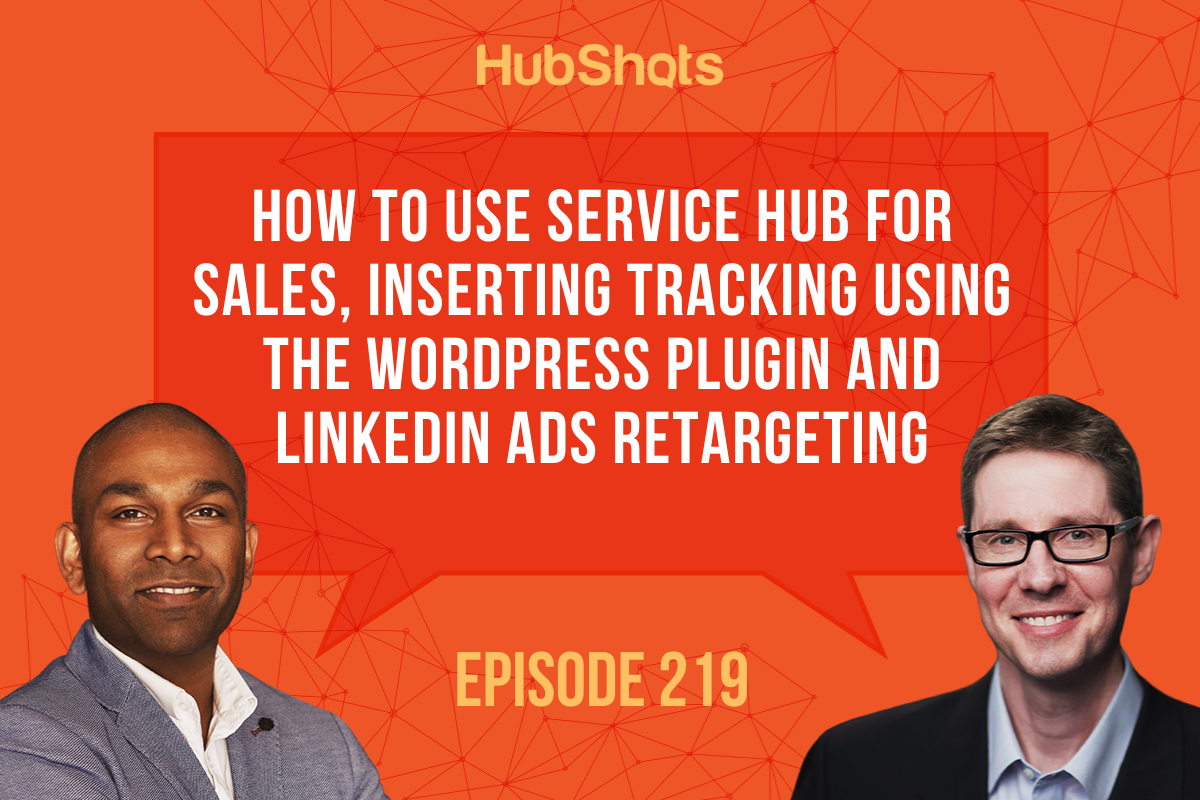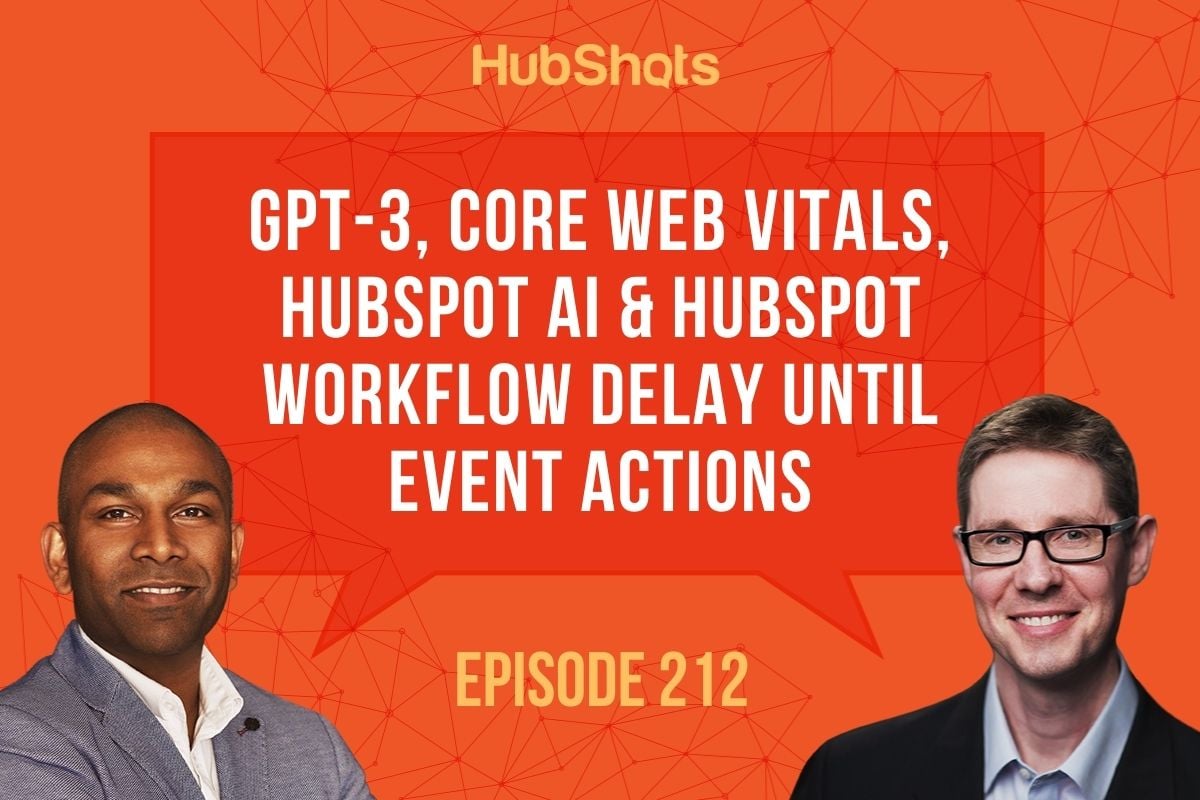Episode 219: How to use Service Hub for Sales, Inserting tracking using the WordPress Plugin and LinkedIn Ads retargeting
Welcome to HubShots Episode 219: How to use Service Hub for Sales, Inserting tracking using the WordPress Plugin and LinkedIn Ads retargeting This...



 Craig Bailey
Craig Bailey
